Asian fruits are a category of fruits throughout the continent, including native and non-native species. The main types of Asian fruits can be categorized into tropical and subtropical varieties, including stone, citrus, berries, and exotic selections.
The main tastes range from the sweetness of ripe mangoes and bananas to the sour tang of tamarind and the complex flavor profile of durian. Textures vary from the creamy custard-like durian to the crisp and refreshing watermelon.
Appearance-wise, these fruits span from the bright yellow and spiky exterior of the starfruit to the green and spiky durian rind or the smooth, round shape of the lychee.
Asian fruits are utilized in various ways: eaten fresh, used in cooking (sweet and savory dishes), blended into smoothies, made into desserts, or used as garnishes.
Culturally, fruits are deeply symbolic in Asian cultures, representing luck, prosperity, or fertility. They’re used in religious ceremonies and as gifts during festivals. For instance, pomelos signify good fortune in China’s Mid-Autumn Festival, and persimmons symbolize good luck in Japan.
Apart from the most famous Asian fruits, I also give you a list of fruits from different Asian countries, explain what most Asian fruits are like, tell you about the top 5 fruit-producing places in Asia, and even touch on some dishes and drinks that use these fruits.
And, I don’t forget to explore some popular Asian vegetables.
Ready to get started?
39 Asian Fruits with Filters
Take a look at these 39 renowned fruits from Asia that are sorted by their popularity. There’s a handy filter you can use to see which fruits are native or come from elsewhere, which are national, exotic or fruit vegetables and which ones are commonly used in dishes, drinks, or just to add a bit of decoration.
Mango
- Haiti
- India
- Pakistan
- Philippines
- For Beverages
- For Dishes
- National
- Native
Mango is a stone fruit native to South and Southeast Asia and holds the title of the national fruit in India, Pakistan, and the Philippines. Mangoes feature well-known types, including the Alphonso, Dasheri, and Kesar from India, and the Chaunsa from Pakistan.
They possess a sweet, rich taste and vibrant yellow-orange flesh, covered by skin ranging from green to yellow or red. Mangoes flourish in warm climates, appearing in the local markets from May to September.
People across Asia enjoy mangoes in various forms – eaten raw for their juicy flesh, blended into smoothies, or used in desserts like sticky rice with mango, a popular treat in Thailand.
Mangoes are widely favored in tropical parts of Asia, especially India, Thailand, the Philippines, and Pakistan. In India, the mango symbolizes life and happiness, which are integral to festivals like Ugadi and Ganesh Chaturthi.
Banana
- For Dishes
- Fruit Vegetables
- Native
Banana is an edible fruit native to Southeast Asia, now grown in many warm parts of the world. Famous banana varieties include the Cavendish, the most widely known internationally, and local varieties, such as the small and sweet “Lady Finger” or red bananas.
Bananas have a distinctively sweet taste when ripe, with a soft and creamy texture, while their appearance can vary from green (unripe) to yellow (ripe) or even red for certain types. They are available all year round across regions.
In Asia, bananas are not just eaten fresh; they’re also fried, baked into desserts, or incorporated into savory dishes. They are particularly popular in the Philippines, India, and Thailand.
Across the Philippines and India, bananas symbolize prosperity and are essential in New Year’s celebrations and Hindu rituals.
Melon
- For Beverages
- For Dishes
- Native
Melon encompasses many fruit types that are part of the Cucurbitaceae family, including sweet varieties, such as cantaloupes and honeydews, and those that are more water-rich, like watermelon.
Each region has developed its preferred types, with famous variations including the Japanese Yubari King, a highly prized and expensive type of cantaloupe, and the Hami melon in China, known for its crisp texture and sweet flavor.
Melons generally have a sweet and refreshing taste, with the flesh colors ranging from pale green to deep orange. Their appearances vary from the netted, rough skin of cantaloupes to honeydews’ smooth, green exterior and the striped, green outer of watermelons.
Native to Africa and Asia, melons have been cultivated for thousands of years in Japan, China, and India. Melons are eaten fresh and raw in the continent, often as a dessert or a refreshing snack during the hot summer.
Watermelon
- Turkmenistan
- For Beverages
- For Dishes
- For Garnish
- National
- Non-Native
Watermelon is a large fruit native to Africa but has been grown across Asia for centuries, becoming a staple summer fruit. They have a thick green rind and juicy, sweet interior flesh, usually pink or red, dotted with black seeds, although seedless varieties are also popular.
Some well-known types across Asia include the Black Diamond and Sugar Baby. Across Asia, watermelons are mostly eaten fresh in slices or cubes, but they’re also juiced, made into smoothies, or used in salads.
In countries like China and Japan, giving watermelons as gifts in the summer is a common practice. Watermelons are widely cultivated in China, the world’s largest producer, and are beloved across the continent from Japan to Iran.
Coconut
- For Beverages
- For Dishes
- Native
Coconut, also known as the tree of life, is a fruit produced by the coconut palm. Coconuts are native to the Indo-Malaysian region but are now found in all tropical areas across the globe, including much of Asia.
The fruit has a hard outer shell, a fibrous husk, and a nourishing inner flesh that’s white and meaty. The water inside young coconuts is sweet and refreshing, while the mature flesh is rich and slightly nutty in taste.
In Asian cuisines, coconut water and milk are used in drinks and curries, the flesh is eaten fresh or dried, and the oil is used for cooking and cosmetics.
Coconuts are widely enjoyed across South and Southeast Asia coastal regions, including India, the Philippines, Indonesia, and Thailand.
Pineapple
- Taiwan
- For Beverages
- For Dishes
- For Garnish
- National
- Native
Pineapple, also known as ananas, is a tropical fruit beloved in Asia. Pineapples have a rugged, spiky exterior with a crown of stiff leaves. Inside, the flesh is sweet, tangy, bright yellow, and highly aromatic.
Several types, like the Smooth Cayenne and the Red Spanish, are found across Asia. Pineapples are available year-round. People in Asia enjoy pineapple fresh, juiced, or in cooked dishes.
It’s common to see pineapple slices being sold as street food, often sprinkled with salt or chili powder for an extra kick. Pineapples are especially popular in Thailand, the Philippines, Vietnam, China and Indonesia.
Papaya
- Malaysia
- For Beverages
- For Dishes
- Fruit Vegetables
- National
- Native
Papaya, known in some places as pawpaw, is a tropical fruit embraced by many Asian countries as a local favorite. The fruit is oval or pear-shaped, with a green to orange skin that turns yellow when ripe.
Its orange flesh is soft, sweet, and has a musky undertone, containing many black seeds in the center. In Asia, the Red Lady and Sunrise are among the popular varieties.
Papayas are mostly available throughout the year. Locals enjoy papaya fresh, in salads, or blended into smoothies. Green papaya, the unripe version, is also widely used in savory dishes, like the famous green papaya salad in Thailand.
Papaya is particularly beloved in Southeast Asia, including Thailand, Indonesia, Vietnam, and the Philippines.
Guava
- For Beverages
- For Dishes
- Native
Guava is a typical fruit in many Asian gardens and markets. Guavas are round or pear-shaped with light green or yellow skin, and the flesh inside can be white, pink, or red, containing hard seeds. They’re favored for their sweet and slightly tart flavor.
In Asia, the Apple Guava and the Thai Guava are among the popular varieties. Guavas can be found almost all year round, with some seasonal variations depending on the region.
Locally, guavas are often eaten raw with a pinch of salt or chili powder, turned into jams or juices, or used in desserts. This fruit is especially savored in India, Pakistan, Vietnam, and the Philippines, where it’s a beloved snack and part of traditional dishes.
Lychee
- Exotic
- For Beverages
- For Dishes
- Native
Lychee, or litchi, is a tropical fruit from the soapberry family. Originally from the Guangdong and Fujian provinces of southeastern China, it has become a favorite fruit across Asia.
Lychees have a rough, red outer skin that peels away to reveal a translucent white flesh that’s juicy and sweet with a floral aroma. The fruit contains a single large seed in the center.
Famous varieties include the Bengal, Mauritius, and Haak Yip. The lychee season is relatively short, typically from May to July. People in Asia enjoy lychees fresh, as the fruit loses its aroma quickly once peeled or canned.
They’re also used in desserts, like ice creams and jelly. Lychees are particularly treasured in China, India, and Thailand, where the climate supports their growth and holds significant cultural value.
Durian
- Indonesia
- Malaysia
- Singapore
- Exotic
- For Dishes
- National
- Native
Durian, often hailed as the “king of fruits,” is an exotic fruit renowned for its large size, strong odor, and thorn-covered husk native to Southeast Asia. Durians have several variations, with the Musang King and D24 being the most sought-after.
The taste of durian is complex, often described as a mix of savory, sweet, and creamy flavors. Its appearance is striking, with a spiky outer shell and soft, custardy flesh inside.
Locals enjoy durian in various ways, from eating it fresh out of the shell to incorporating it into traditional desserts and savory dishes. In countries like Malaysia, Thailand, and Indonesia, it’s often enjoyed in gatherings and special occasions such as the Durian Festival in Malaysia.
Jackfruit
- Bangladesh
- Sri Lanka
- Exotic
- For Dishes
- Fruit Vegetables
- National
- Native
Jackfruit, known in various parts of Asia as “kathal” or “nangka,” is a large, tropical fruit native to South and Southeast Asia. The fruit can be found in several varieties across Asia, with the Honey jackfruit and Black Gold being famous for their sweetness and superior texture.
Jackfruit’s taste is sweet and fruity, with a texture that can vary from crunchy to soft, depending on its ripeness.
In Asian cuisine, jackfruit is celebrated for its dual role as both a fruit and a vegetable. Unripe jackfruit is used in savory dishes, offering a meat-like texture, while the ripe fruit is enjoyed for its sweet, flavorful flesh, often eaten fresh or used in desserts.
Jackfruit is especially popular in India, Bangladesh, Thailand, and the Philippines. It’s a common sight in local markets during its season, from March to June.
Dragon Fruit
- Vietnam
- Exotic
- For Beverages
- For Dishes
- For Garnish
- National
- Non-Native
Dragon fruit, also known as pitaya, is native to the Americas but has become a staple in Asian cuisine and culture, particularly in countries like Vietnam (considered a national fruit), Thailand, and Malaysia.
The fruit comes in varieties such as the white-fleshed Hylocereus undatus and the red-fleshed Hylocereus costaricensis. Dragon fruit stands out with its bright pink or yellow skin and spiky green scales, making it look like a mythical dragon’s egg.
It’s typically in season from summer to early autumn. In Asia, dragon fruit is often eaten fresh, scooped straight from the skin, or added to salads, smoothies, and desserts for a splash of color and a burst of hydration.
Pomelo
- For Beverages
- For Dishes
- Native
Pomelo, known locally as “som-o” in Thailand or “jeruk bali” in Indonesia, is the largest citrus fruit, bearing a sweet and tangy flavor beneath its thick, green, or yellow rind.
This fruit is native to Southeast Asia and is widely regarded as a symbol of prosperity and good fortune, especially during festive occasions like the Lunar New Year and the Mid-Autumn Festival in countries like China and Vietnam.
There are several variations of pomelo, including the sweet, pink-fleshed types and the more tangy, white-fleshed varieties.
The fruit’s taste can range from very sweet to slightly bitter. Pomelos are commonly enjoyed fresh, with the flesh segmented and eaten on its own or tossed into salads for a refreshing, citrusy lift.
Grape
- For Beverages
- For Dishes
- Native
Grapes, a sweet to tart berry variety, come in green, red, purple-black colors and are native to temperate climates in Asia, notably China, India, and Turkey. They are consumed fresh, dried as raisins, or used in wine, juice, and jams, celebrated for convenience and taste.
Culturally significant, grapes feature in festivities like China’s Mid-Autumn Festival and Turkey’s Grape Harvest Festival. Key Asian varieties include Japan’s large, sweet Kyoho grape and India’s versatile Thompson Seedless grape.
Preferred for their refreshing taste, grapes are often eaten raw or in salads and symbolize abundance and prosperity. Their successful growth in warm, dry climates positions China as one of the top global grape producers.
Longan
- For Beverages
- For Dishes
- Native
Longan, also known as “dragon eye” for its appearance when shelled, is a small, round fruit native to Southeast Asia. This fruit is treasured across the continent, especially in Thailand, Vietnam, and China.
Longans are celebrated for their translucent, juicy flesh that offers a sweet, floral taste. The fruit is encased in a thin, brown shell, and its flesh surrounds a large, shiny seed, giving it the dragon eye moniker. They are typically harvested in the summer months.
People in Asia enjoy longan, fresh or dried. Longans are a staple on festive occasions, often served as a dessert or a sweet snack. Longan is highly favored in China during the Chinese New Year celebration, symbolizing luck and family unity.
Rambutan
- Exotic
- For Beverages
- Native
Rambutan, with its hairy appearance, is a tropical delight that originated in Southeast Asia. Its name comes from the Malay word “rambut,” meaning hair, which describes the fruit’s unique, spiky exterior.
Rambutan trees flourish in Malaysia, Indonesia, Thailand, and the Philippines. This fruit is often eaten fresh; the soft, fleshy part is enjoyed by peeling away the outer skin. Rambutan is also used in salads and desserts and sometimes even cooked in savory dishes.
It’s common in local markets during its peak season, which runs from May to September in most of Asia.
Starfruit
- Exotic
- For Beverages
- For Dishes
- For Garnish
- Native
Starfruit, or carambola, is a juicy, star-shaped fruit known for its vibrant yellow color and distinctive ridges that run down its sides. Native to Southeast Asia, it has found a home in the hearts and diets of people across the region, including Malaysia, the Philippines, and Indonesia.
Starfruit varies in taste from sour to sweet, depending on the variety and ripeness. The most well-known types include the sweet B10 and Arkin, favored for their crisp texture and refreshing flavor.
This fruit is usually in season from June to February. Locals enjoy starfruit, both raw and cooked. It’s commonly eaten fresh, and sliced to reveal its star shape.
In culinary uses, it’s also found in juices, jams, and even savory dishes. Starfruit is popular in local festivals and gatherings, often symbolizing good luck and prosperity.
Passion Fruit
- For Beverages
- For Garnish
- Native
Passion fruit is a spherical, tropical fruit widely appreciated in Asia, particularly India, Indonesia, and Vietnam. This fruit comes in several varieties, such as the Purple and Yellow passion fruit, each offering a unique taste profile.
The Purple variety is noted for its intense aroma and sweet flavor, while the Yellow type is larger and slightly more acidic. The fruit’s interior is filled with a juicy, seed-laden pulp with a tart, robust flavor and a fragrant aroma.
It’s typically in season from mid-summer to early fall. In Asia, people enjoy passion fruit in many ways, from drinking its juice to incorporating the pulp into desserts, salads, and sauces. It is also a popular ingredient in smoothies and cocktails as well.
Persimmon
- Japan
- South Korea
- Exotic
- For Dishes
- National
- Native
Persimmon, known in some regions as “kaki,” is a sweet, delicate fruit from China. It has since spread across Asia, becoming particularly beloved in countries like Japan, Korea, and China.
Persimmons come in two main types: the astringent Hachiya, which must be fully ripe before eating, and the non-astringent Fuyu, which can be eaten while still firm.
When ripe, the fruit tastes sweet and honey-like, with a soft, sometimes jelly-like texture. Persimmons are usually harvested in the late fall and found in gracing markets throughout winter.
Locals consume persimmons, both fresh and dried, with the latter being a traditional method of preservation that results in a sweet, chewy snack known as “dried persimmon.”
Persimmons are also used in cooking, appearing in everything from desserts to savory dishes. In Japan, persimmons are a common New Year gift symbolizing good luck.
Apricot
- Armenia
- For Beverages
- For Dishes
- National
- Native
Apricot, also known as “zardaloo” in some regions, is a stone fruit native to Asia characterized by its velvety skin and soft, fleshy texture. The fruit boasts a warm, golden-orange hue, and is celebrated for its sweet and slightly tart flavor.
Some well-known variations of Asian apricots include the Hunza, Tilton, and Katy. These fruits are typically harvested in the late spring to early summer months.
In many Asian countries, apricots are enjoyed fresh and dried, the latter being a staple in numerous snacks, desserts, stews, and compotes.
Date Palm
- Saudi Arabia
- United Arab Emirates
- For Beverages
- For Dishes
- National
- Native
Date palm, simply known as “date,” is a fruit from the date palm tree renowned in Asia. Dates come with a sweet, rich flavor and chewy texture.
Some famous varieties include Medjool, Deglet Noor, and Ajwa. Dates are typically brown or black, with a wrinkled outer skin when dried.
Locals in Asia and the Middle East enjoy dates in various ways – fresh, as a natural sweetener in desserts, and even in savory dishes. During Ramadan, dates hold a special place as they are traditionally used to break the fast due to their nutritional value and energy-boosting properties.
Tamarind
- For Beverages
- For Dishes
- Native
Tamarind is a tangy, pod-like fruit known for its essential role in the cuisines of Asia, particularly in India, Thailand, and the Philippines.
This fruit grows on the tamarind tree and is encased in a brown, brittle shell. The flesh is sticky, dark, and fibrous, with a flavor that perfectly balances sweet and sour.
Locals use tamarind in a myriad of ways: to flavor drinks, in sauces, soups, and marinades, and as a pickling agent. It’s a key ingredient in popular dishes like pad Thai and tamarind fish. It’s often used in chutneys and the famous tamarind rice in India.
Mangosteen
- Thailand
- Exotic
- For Beverages
- National
- Native
Mangosteen, often called the “queen of fruits,” is a tropical fruit across Southeast Asia, particularly Thailand, Malaysia, and Indonesia. This fruit boasts a thick, purple rind and a soft, white interior divided into segments, much like an orange.
The taste of mangosteen is a blend of sweet and sour. Mangosteens are typically in season from May to August. The consumption of mangosteen is usually straightforward; the fruit is split open to reveal the juicy segments inside, which are then eaten fresh.
Beyond its fresh form, mangosteen is occasionally used in desserts.
Kiwi
- China
- For Beverages
- For Dishes
- For Garnish
- National
- Non-Native
Kiwi, or kiwifruit, originally known as Chinese gooseberry before gaining popularity worldwide, is a small, fuzzy, brown fruit with bright green or golden flesh dotted with tiny, edible black seeds.
Kiwi is celebrated for its vibrant taste, a perfect mix of sweet and tart, and its high vitamin C content. The fruit is typically available year-round due to different growing seasons across the globe.
In Asia, especially in China and Japan, kiwi is enjoyed in its fresh form or used as a flavorful addition to salads, desserts, and smoothies. The green variety is the most common, prized for its refreshing taste, while the golden variety is prized for its sweeter, more tropical flavor.
Salak
- For Dishes
- Native
Salak, also known as snake fruit due to its reddish-brown scaly skin, is a staple in Southeast Asia, especially Indonesia, considered its native land.
The fruit grows in clusters at the base of the palm, and when peeled, its flesh appears in lobes with a crunchy texture and a taste that can range from sweet to sour. Salak has several varieties, with Salak Pondoh from Yogyakarta and Salak Bali being among the most famed.
This fruit is usually eaten fresh but can also be made into pickles, jams, and even wines.
Soursop
- For Beverages
- Non-Native
Soursop, also known as graviola, is a tropical fruit native to the Americas but has adopted a new home in Southeast Asia. This prickly green fruit has a soft, fibrous interior with sweet and tart flavors, reminiscent of strawberry, pineapple, and citrus notes.
Soursop comes in various shapes and sizes, often weighing up to a few kilograms. It’s generally harvested during the wetter months, adapting well to the tropical climates of Thailand, Malaysia, and the Philippines.
Locals enjoy fresh soursop or use it in juices, smoothies, and desserts. Its taste and creamy texture make it a favored ingredient for the region’s ice creams and fruit bars.
Sugar Apple
- For Beverages
- For Dishes
- Native
Sugar apple, or sweetsop, flourishes under the tropical sun of South and Southeast Asia. Known for its lumpy green exterior and sweet, creamy flesh that separates easily into segments, this fruit is often likened to custard.
The taste is a blend of sweetness with a hint of vanilla. Sugar apple’s season peaks from late summer through fall. This fruit is widely consumed fresh, and its segments are eaten straight from the hand. However, it’s also popular in desserts and smoothies.
Sugar apple is common in Asian markets and households, particularly in India and Thailand.
Asian Pear
- For Dishes
- For Garnish
- Native
Asian pear, or nashi pear, is native to East Asia. It looks quite different from European pears, being round, crisp, and often with golden-brown or green skin.
The taste is sweet and juicy, more akin to an apple than a traditional pear, which explains another of its names: “apple pear.” Asian pears, including Nijisseiki and Hosui, come in various types and are popular for their distinct flavors and textures.
They are typically eaten raw and enjoyed for their refreshing, crunchy texture. In countries like China, Japan, and Korea, Asian pears are a common fruit, especially enjoyed in the autumn when they are most abundant.
In addition to being eaten fresh, they’re also used in cooking and as gifts during important festivals like the Lunar New Year, symbolizing good health and prosperity.
Pulasan
- Exotic
- For Dishes
- Native
Pulasan, closely related to the rambutan, is a tropical fruit native to Southeast Asia. In some dialects, its name literally means “to twist,” referring to how one opens the fruit by twisting the outer skin apart.
The fruit is similar in appearance to the rambutan but has a thicker skin and is more spherical. Inside, the edible part is translucent-white, sweet, and juicy, with a flavor that hints at grapes and lychee.
Pulasan trees bear fruit primarily in the wet season, and there are a few notable varieties, such as the red and yellow-skinned types. In regions like Malaysia, the Philippines, and Indonesia, locals enjoy pulasan fresh, often as a snack or a refreshing end to a meal.
Langsat
- For Dishes
- Native
Langsat, also known as langsah, is a tropical fruit native to Southeast Asia and is particularly prevalent in Malaysia and Indonesia. The fruit has a round, oval shape, with a thin, pale yellow skin that’s easy to peel.
Inside, the segments are white, juicy, and sometimes slightly sour, with a taste that can remind you of a bittersweet grapefruit or a combination of pomelo and tangerine.
Langsat comes in several types, with the duku and dokong being notable for their sweeter taste and thicker skin. This fruit is usually eaten fresh, often as a refreshing snack during the hot, humid days prevalent in its native region.
It’s also used in local desserts and sometimes fermented into syrup. Langsat is harvested and enjoyed during its peak season, from late summer to early fall.
Kumquat
- For Beverages
- For Dishes
- For Garnish
- Native
Kumquat, originally from South Asia and the Asia-Pacific region, has become quite popular in China, Vietnam, and Japan. This small, oval citrus fruit has a sweet, edible skin and a tart, juicy interior.
Kumquats are enjoyed in their natural state, often eaten whole, or used as a sweet-tart addition to salads, desserts, and even savory dishes. They’re also commonly made into preserves, candied fruits, and marmalades.
The Nagami and Meiwa kumquats are widely recognized in varieties, with the former being more tart and the latter sweeter and rounder.
Kumquat trees bear fruit in the late winter to early spring, marking a season of renewal and festivity, especially during the Lunar New Year in China and Vietnam, where they symbolize prosperity and good fortune.
Santol
- For Dishes
- Native
Santol, or cotton fruit, is a tropical fruit native to Southeast Asia and is common in Thailand, Malaysia, and the Philippines. The fruit has a round shape with thick, leathery skin ranging from yellow to light brown.
Inside, it has a white, cotton-like flesh that’s both sweet and sour, surrounding a few large seeds. The taste of santol can be compared to a mix of apple and peach but with a tart twist.
There are two main types of santol: the yellow and the red, with the former being more common. Santol is usually eaten fresh but is also used in sweet and savory local dishes. For example, it’s popular in the Philippines for salads, soups, and stews.
Ice Apple
- For Beverages
- Native
Ice apple, known as nungu in some parts of India, is a tropical fruit native to the Indian subcontinent and Southeast Asia.
The fruit is encased in a hard shell, and inside, it resembles a translucent, jelly-like kernel that’s incredibly hydrating and has a mildly sweet taste, somewhat like lychee mixed with a refreshing watery texture.
Ice apple is particularly sought after during the hot summer for its cooling effect. It is a staple in its growing regions, especially in South India, Bangladesh, and Southeast Asia. Locals consume it raw, directly after peeling the outer layer, or use it in traditional desserts.
Breadfruit
- For Dishes
- Fruit Vegetables
- Non-Native
Breadfruit is a large, starchy fruit native to the Pacific Islands and Southeast Asia. It’s known in various places by names like ‘ulu and has become an important food source in tropical regions worldwide.
The fruit’s skin is green and spiky, and its flesh is creamy, white, yellow, and spongy. Breadfruit tastes mild and potato-like when cooked, making it versatile in various dishes, from boiled and fried to baked goods.
There are numerous cultivars of breadfruit, some bearing seedless fruits and others with seeds. In the regions where it’s grown, like the Philippines, Indonesia, and Malaysia, breadfruit is often used as a staple food, similar to how potatoes are used in other parts of the world.
Noni
- Exotic
- For Beverages
- Native
Noni is a fruit native to Southeast Asia and the Pacific Islands. It’s also called Indian mulberry in some regions. Noni features warty, greenish-white skin, and is renowned for its strong, somewhat pungent smell and bitter taste, which makes it less likely to be eaten raw.
Despite its challenging flavor profile, noni is highly valued for its medicinal properties and is used in traditional medicine across Asia and the Pacific.
Noni has few variations, but its use varies significantly from place to place. Noni juice is famous for its health benefits in India, Thailand, and Fiji.
Goji Berries
- Exotic
- For Beverages
- For Dishes
- Native
Goji berries, often called wolfberries, are small, red fruits native to Asia. These berries are not just a fruit but a medicinal herb in countries like China, where they have been used for thousands of years.
Goji berries are sweet with a slight herbal tang and are commonly dried like raisins. They feature bright orange-red color and are usually consumed dried, cooked, or as part of herbal teas and juices.
They flourish in the temperate and subtropical regions of China, Mongolia, and the Tibetan Himalayas. Goji berries are integral to traditional Chinese medicine and are celebrated in the region’s Lunar New Year festivities, symbolizing longevity and health.
Chinese Bayberry
- For Beverages
- For Dishes
- Native
Chinese bayberry, or yangmei, is a fruit beloved across East Asia, particularly in China. It’s a round, plump fruit with a rough texture, ranging from dark red to purple. The taste of Chinese bayberry is a blend of sweet and sour.
Several famous varieties, including the Dongkui and Biqi, vary slightly in sweetness, size, and color. In countries like China, where it is most popular, Chinese Bayberry is eaten fresh, candied, dried, and made into juices or wines.
Rose Apple
- Exotic
- For Dishes
- For Garnish
- Native
Rose apple, known in many parts of Southeast Asia as “chomphu,” is a bell-shaped fruit native to Southeast Asia that often bears light pink to red hue, resembling small apples.
Unlike regular apples, the rose apple has a crisp, watery texture with a mildly sweet and floral taste, often compared to roses, hence its name.
It’s most commonly eaten fresh, sometimes sliced, and added to salads. Rose Apple is commonly found in local Vietnamese, Thai, and Malaysian markets.
Sapodilla
- Exotic
- For Beverages
- For Dishes
- Non-Native
Sapodilla, also known as “chikoo” in some regions, is a tropical fruit with a rough brown exterior and a sweet, caramel-like taste.
This fruit is native to Central America but has become a staple in many South Asian and Southeast Asian countries, particularly India, Pakistan, Thailand, and Malaysia.
The flesh of Sapodilla is grainy, similar to a pear, and contains a few black seeds in its center. It’s rich in sugars and vitamins, making it a favorite for energy-boosting snacks. Sapodilla is enjoyed in various ways – eaten raw, made into smoothies, or used in desserts.
List of Asian Fruits by Country
What Are the Features of Asian Fruits by Region?
Here’s a broad overview of the characteristics of Asian fruits by region, highlighting the common fruits found in each area:
The fruits from this region often balance sweetness and tartness, reflecting the temperate and subtropical climates of the area. Many fruits are seasonal, with specific harvest times.
Common Fruits: Persimmon, Asian pear, lychee, longan, and dragon fruit.
Tropical climate fruits from this region are known for their vibrant colors, intense flavors, and high moisture content. Many of these fruits are unique to the region and are consumed fresh and in various local dishes.
Common Fruits: Durian, mango, rambutan, jackfruit, and papaya.
South Asian fruits are flavorful and aromatic, reflecting the region’s hot and humid climate. These fruits are often integral to the local cuisine, and used in savory and sweet dishes.
Common Fruits: Mango (with numerous varieties), banana, guava, coconut, and pomegranate.
The fruits from Central Asia are often hardy and able to withstand cooler temperatures. They are typically sweet and have a long shelf life, making them suitable for storage and transport.
Common Fruits: Melons (including unique varieties), apricots, plums, and grapes.
West Asian fruits often have a rich flavor and are highly nutritious, reflecting the arid and semi-arid climates of the region. Many of these fruits have been cultivated for thousands of years and are deeply ingrained in the local culture and cuisine.
Common Fruits: Dates, figs, pomegranates, and citrus fruits (such as oranges).
Now that you’ve explored the rich diversity of Asian fruits, let’s take a look at which countries are at the forefront of producing these delicious treats.
Which Asian Countries Produce the Most Fruits?
According to the FAO CSD’s 2020 report, below are the top 5 fruit-producing countries in Asia:
The abundance of fruit in these countries has given rise to an array of fruit-based dishes, from sweet to savory, that are cherished globally.
What Fruit-Based Dishes from Asia Are Renowned?
Here are the top 5 celebrated Asian dishes featuring fruit as ingredients.
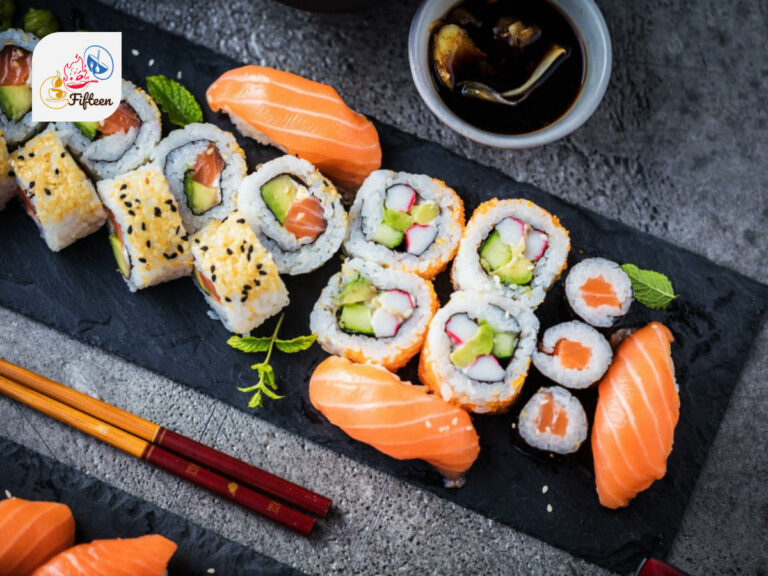
Sushi
Sushi is a Japanese dish featuring specially prepared vinegared rice and various ingredients like seafood, vegetables, and sometimes tropical fruits like avocado.
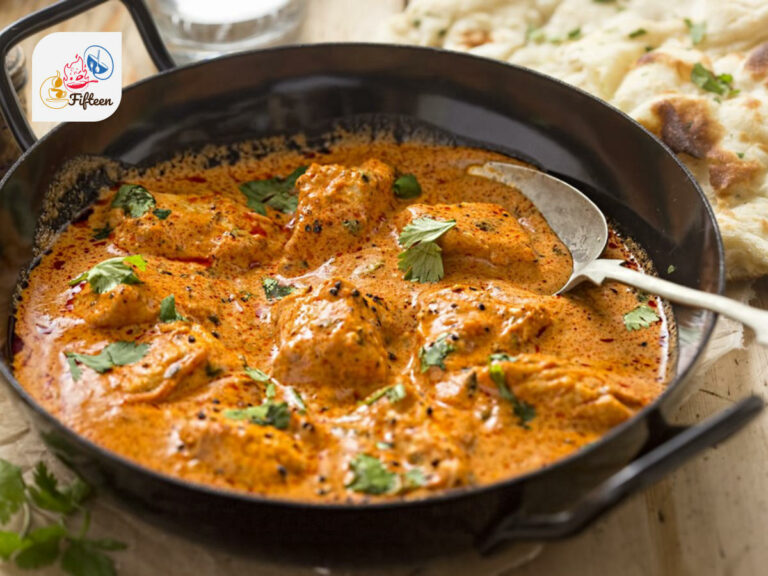
Curry
Curry is a savory dish that varies greatly by region but generally consists of meat or vegetables cooked in a sauce of spices and herbs, with some versions including coconut milk for a creamy texture.
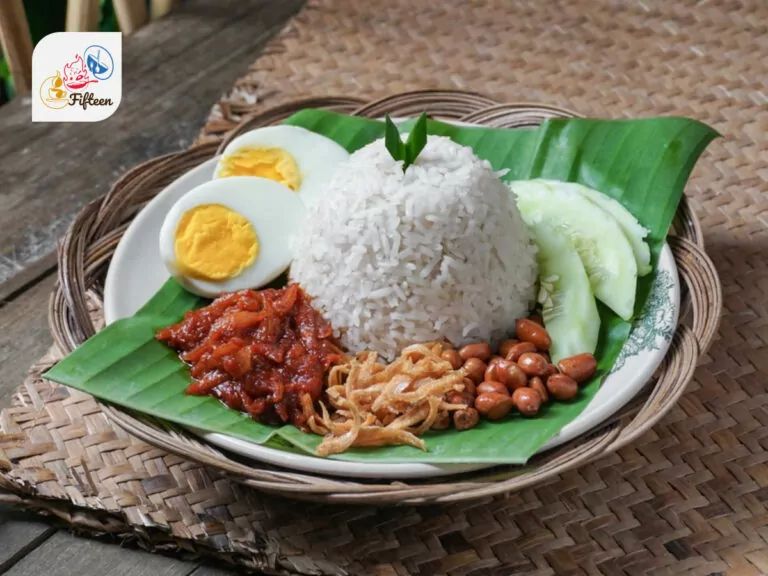
Nasi Lemak
Nasi lemak is a Malay rice dish cooked in coconut milk and pandan leaf, traditionally served with fried crispy anchovies, peanuts, eggs, cucumber, and spicy sambal.
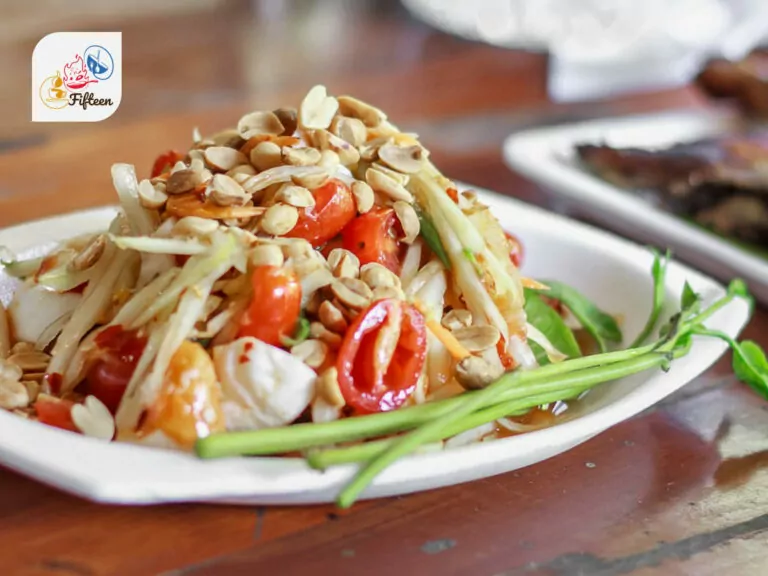
Green Papaya Salad
Green papaya salad is a spicy salad made from shredded unripe papaya, tomatoes, green beans, peanuts, lime juice, fish sauce, and chili peppers, popular in Southeast Asia.
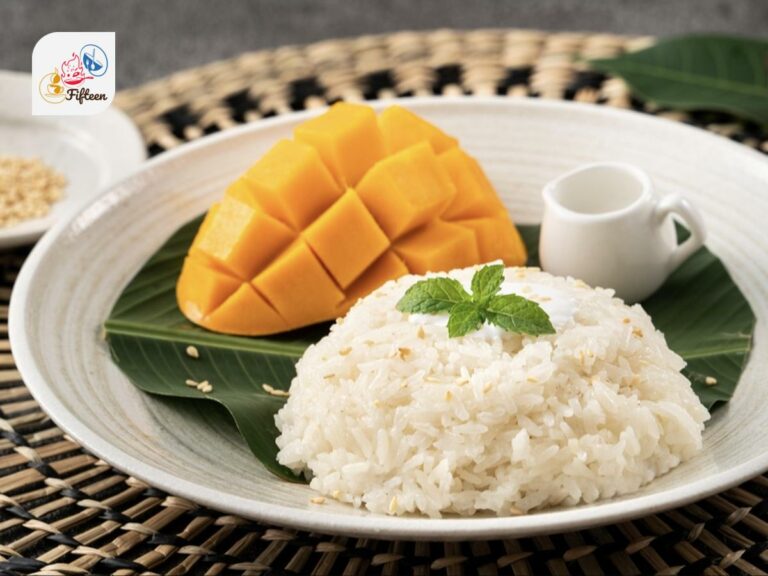
Mango Sticky Rice
Mango sticky rice is a traditional Thai dessert made from glutinous rice, coconut milk, and ripe mangoes. This dish is often sprinkled with toasted sesame seeds or mung beans.
Mango sticky rice is a traditional Thai dessert made from glutinous rice, coconut milk, and ripe mangoes. This dish is often sprinkled with toasted sesame seeds or mung beans.
If your favorite dishes aren’t listed, don’t worry! There are lots of Asian dishes for you to check out.
Also, take a chance to explore Asian drinks made with fruits while you’re here!
Which Asian Fruit Beverages Are Must-Tries?
Highlighting Asia’s most famous 5 beloved beverages crafted with fruit:
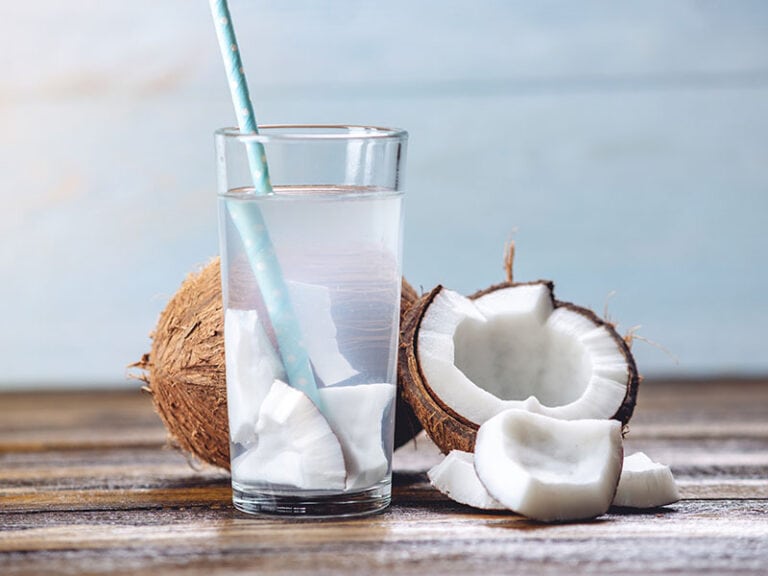
Coconut Water
Coconut water is the clear, refreshing liquid inside young coconuts, often enjoyed for its sweet, nutty taste and hydrating properties.
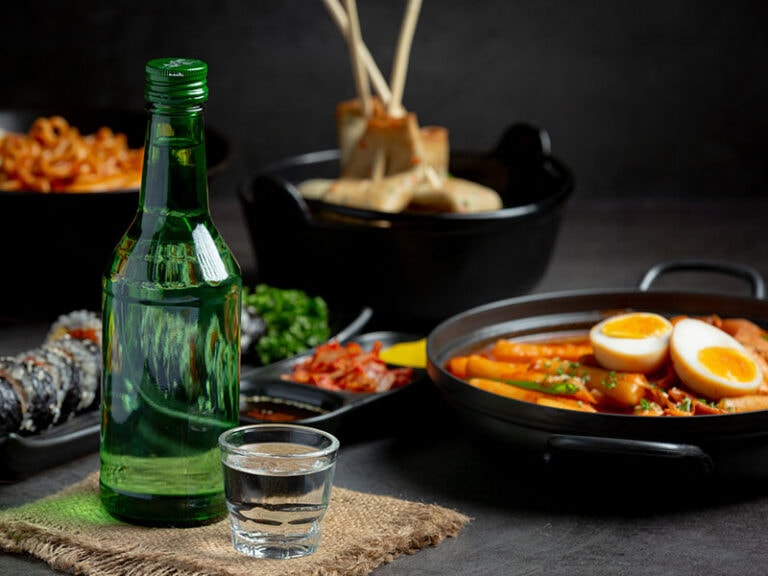
Soju
Soju is a smooth, clear Korean liquor, sometimes infused with fruit flavors like peach, grapefruit, or green apple for a sweet twist.
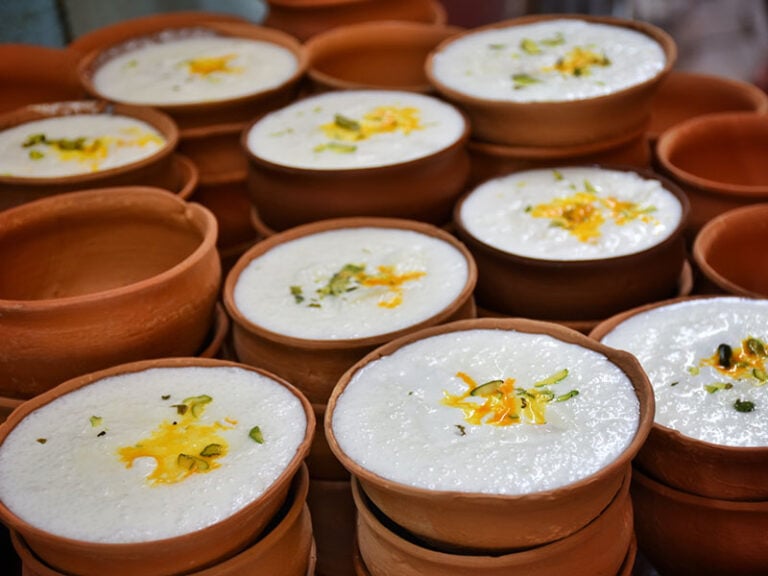
Lassi
Lassi is a creamy, yogurt-based drink from the Indian subcontinent, available in sweet or salty flavors and often flavored with fruit like mangoes or spices.

Ramune
Ramune is a fizzy Japanese soda with a quirky bottle and a marble stopper. It is available in flavors like strawberry, melon, and original lemon-lime.
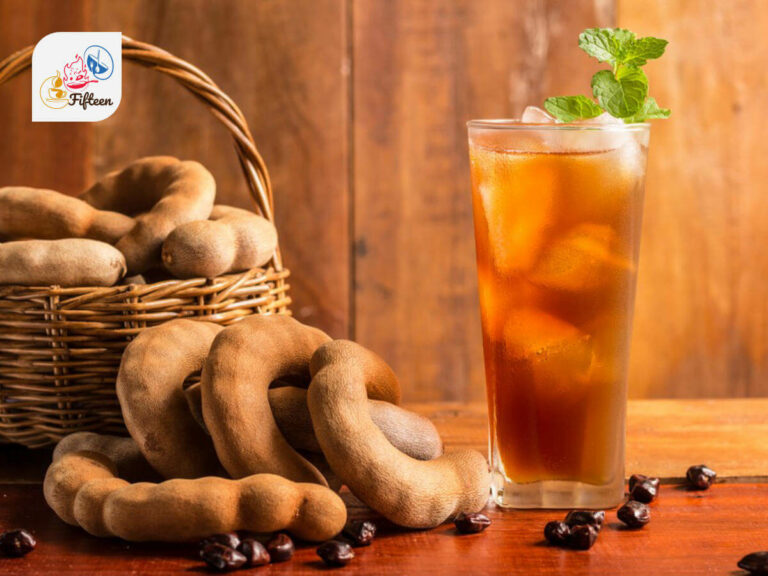
Tamarind Juice
Tamarind juice is a tangy, sweet beverage made from the pulp of the tamarind fruit, enjoyed for its unique flavor and cooling effect in hot weather.
If you didn’t find your preferred drinks here, no problem! I’ve got a bunch more Asian drinks you can discover.
And while you’re here, why not explore some popular Asian vegetables?
Which Are the Most Famous Asian Vegetables?
Below are 5 most renowned vegetables in Asian cooking:
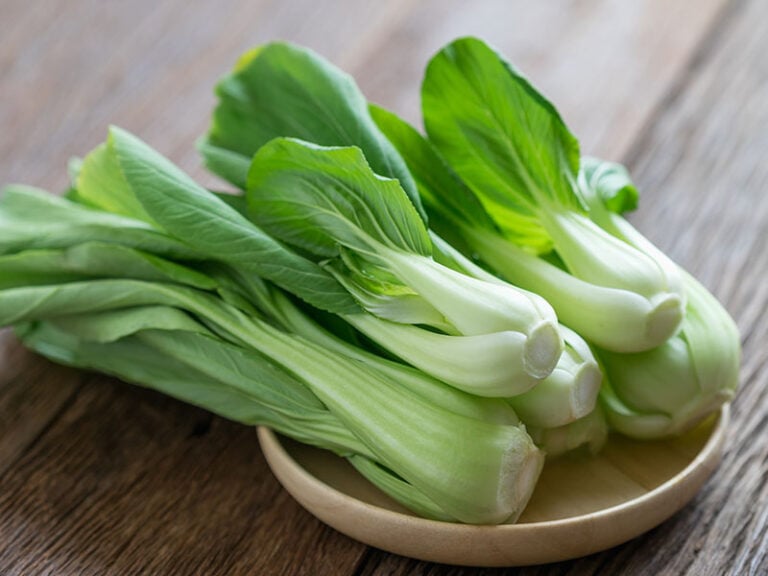
Bok Choy
Bok choy, a type of Chinese cabbage, is famed for its crisp leaves and a fresh, slightly peppery flavor. It’s a staple in Asian cooking, often stir-fried, steamed, or added to soups.
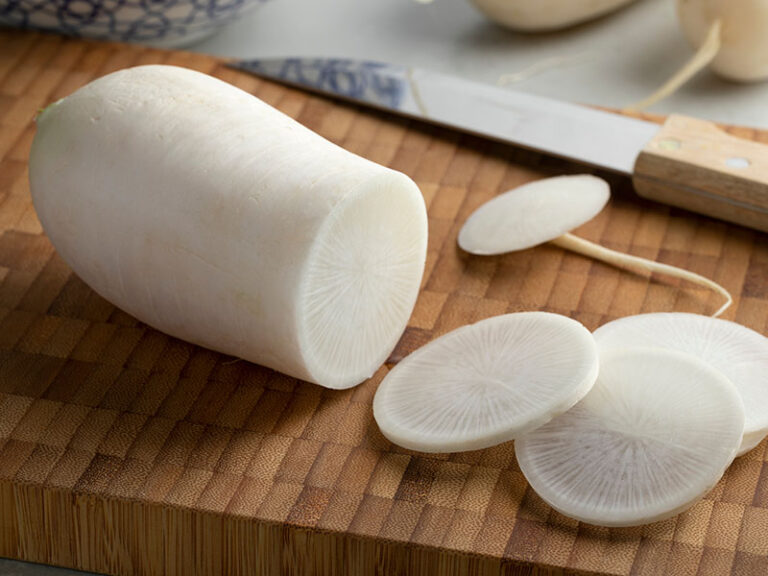
Daikon
Daikon is a large, white radish with a mild flavor and is commonly used in salads, as a crunchy garnish, or pickled. Daikon is also integral to many Japanese and Korean dishes.
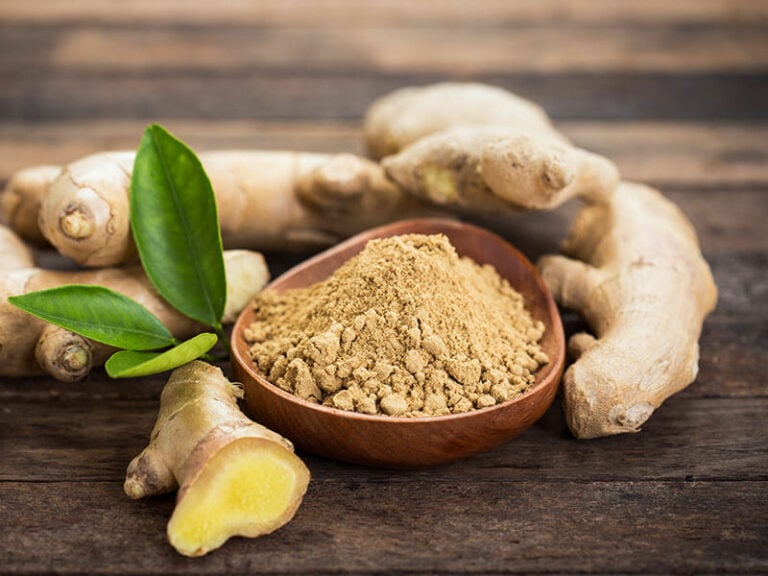
Ginger
Ginger is a rhizome featuring a pungent and spicy flavor. It is essential in nearly all Asian cuisines, used both fresh and dried for its aromatic, spicy flavor.
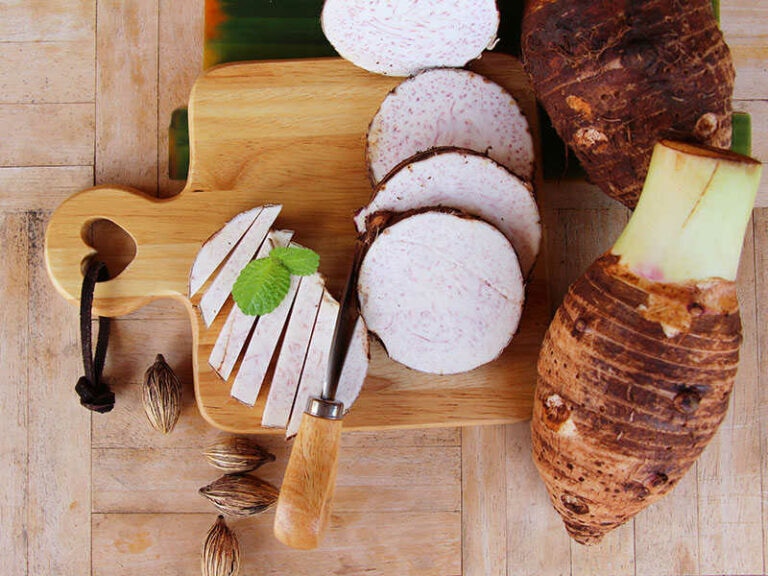
Taro Root
Taro is a starchy root vegetable that plays a crucial role in many Asian cuisines with nutty flavor. It can be boiled, steamed, or fried and is often used in savory and sweet dishes.
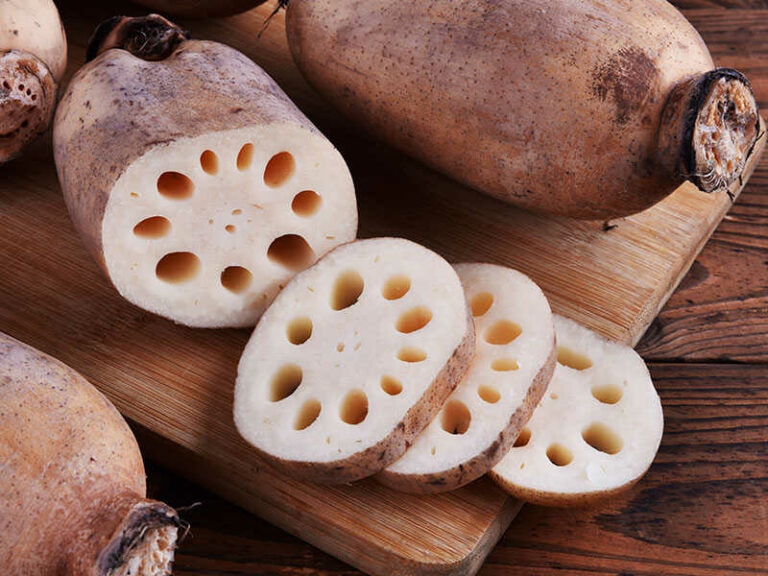
Lotus Root
The lotus root is the edible rhizome of the lotus plant. It has a crisp, slightly sweet taste and is often used in salads, stir-fries, and soups.
Plus, there’s always room to uncover more about the vast array of vegetables belonging to Asia. Let’s dive in and find some hidden gems together!
Did you enjoy the journey? If you loved discovering these exotic treasures, click that like button, share the sweetness with your friends, and drop us a comment about your favorite fruit adventure. Let’s spread the taste of Asia far and wide together!


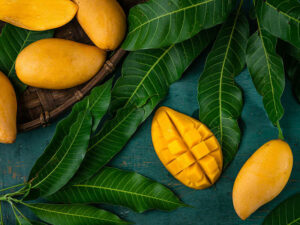

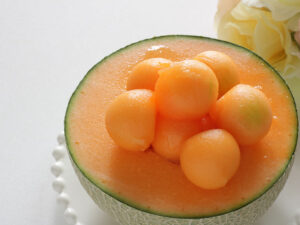
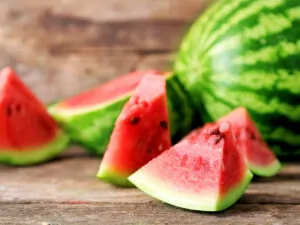
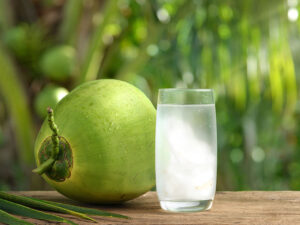
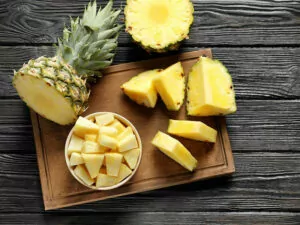
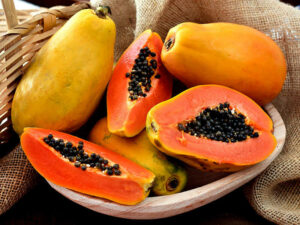
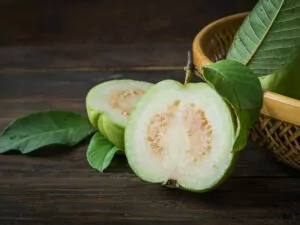
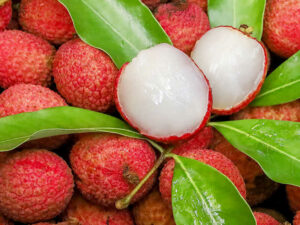
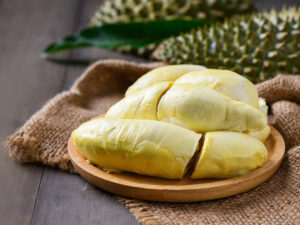
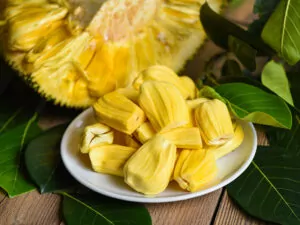
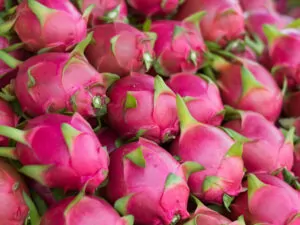
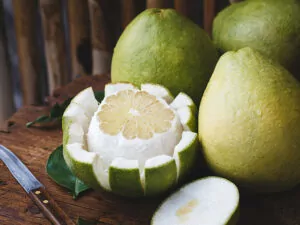
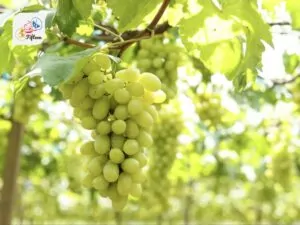
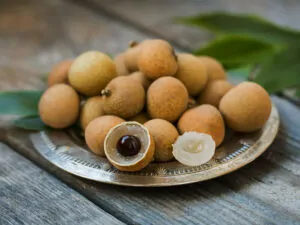
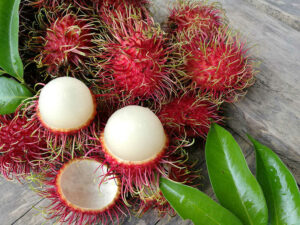
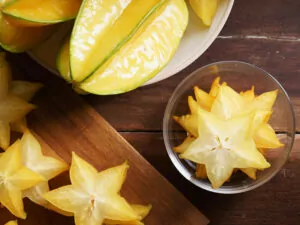
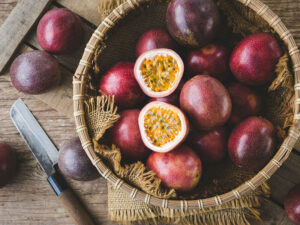
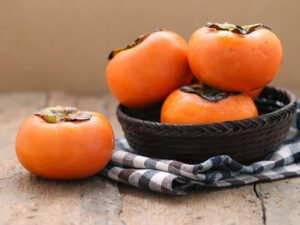
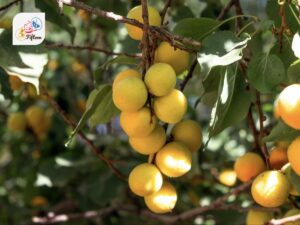
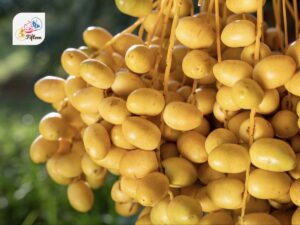
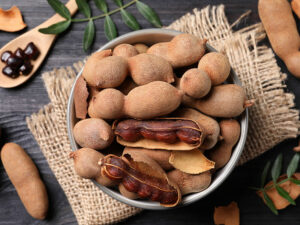
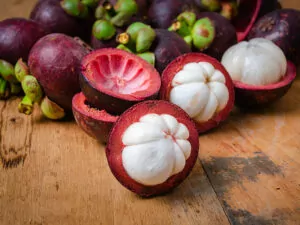

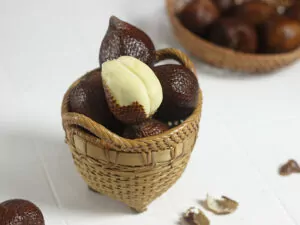
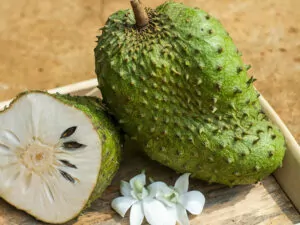
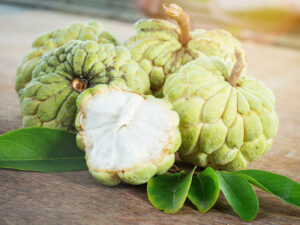
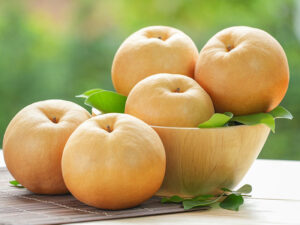
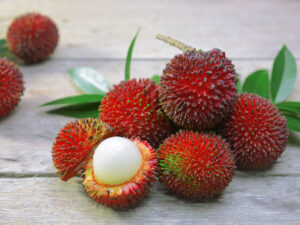
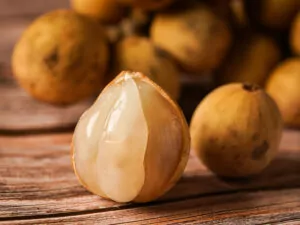
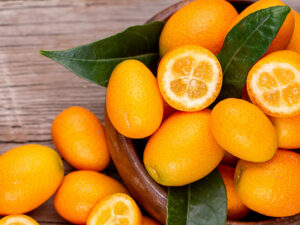
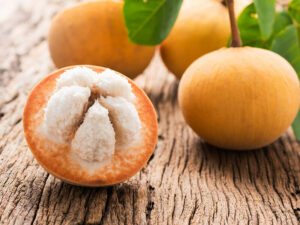
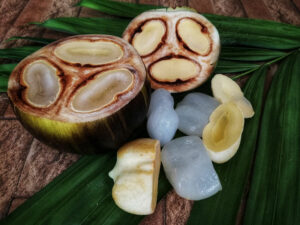
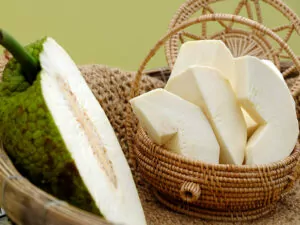
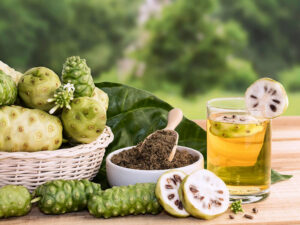
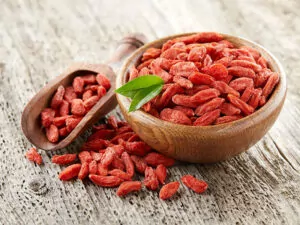
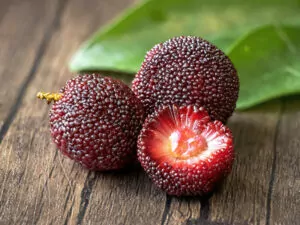
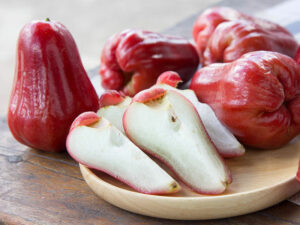
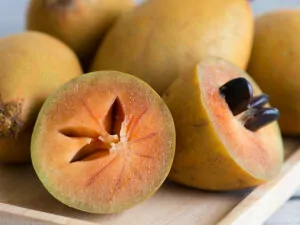
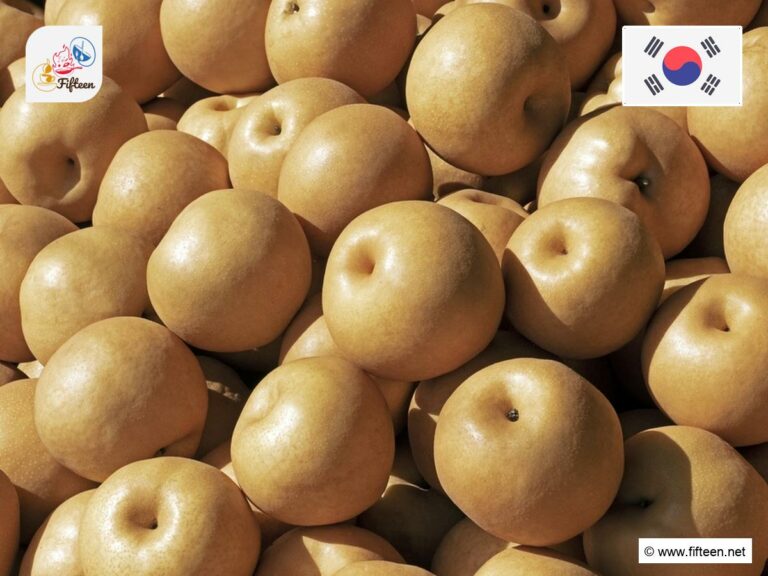
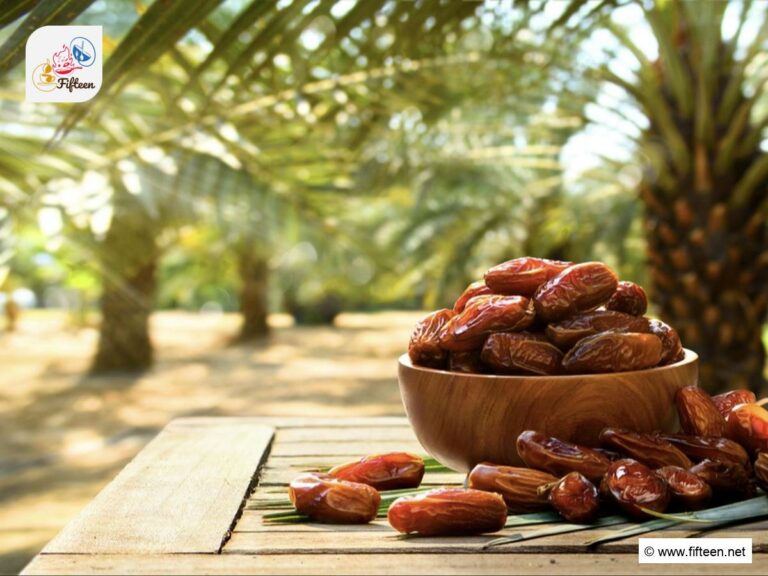
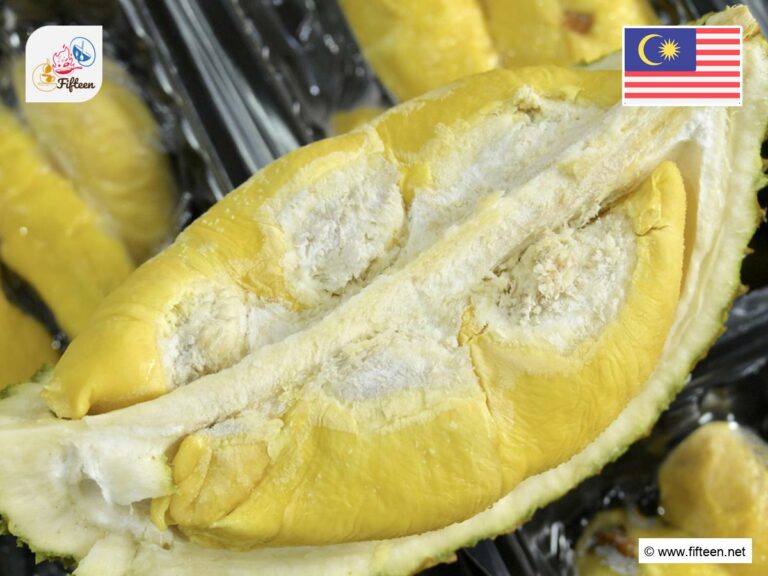
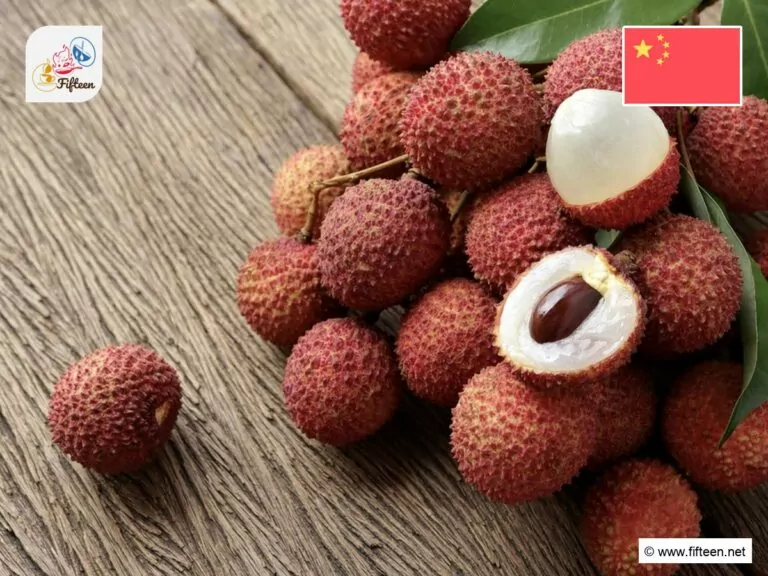
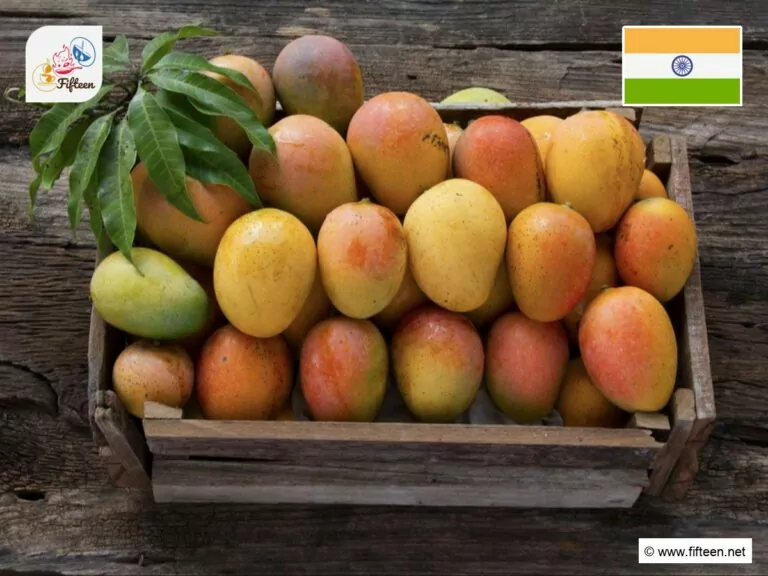
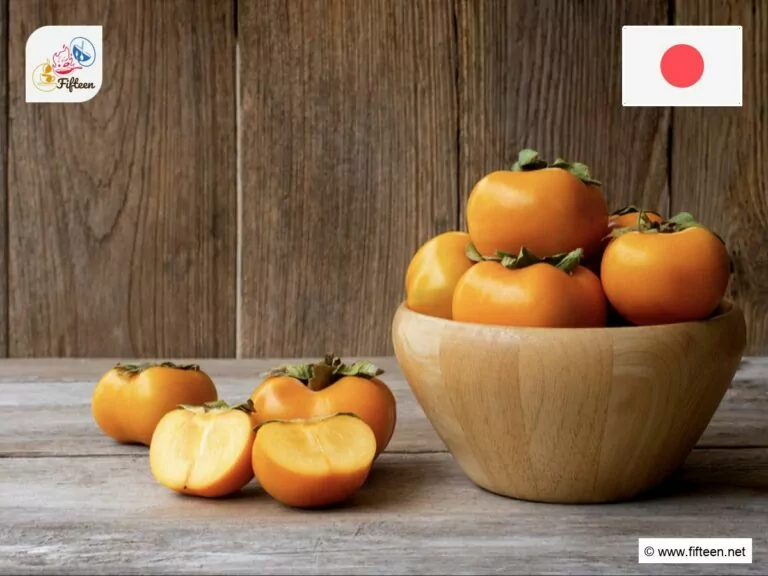
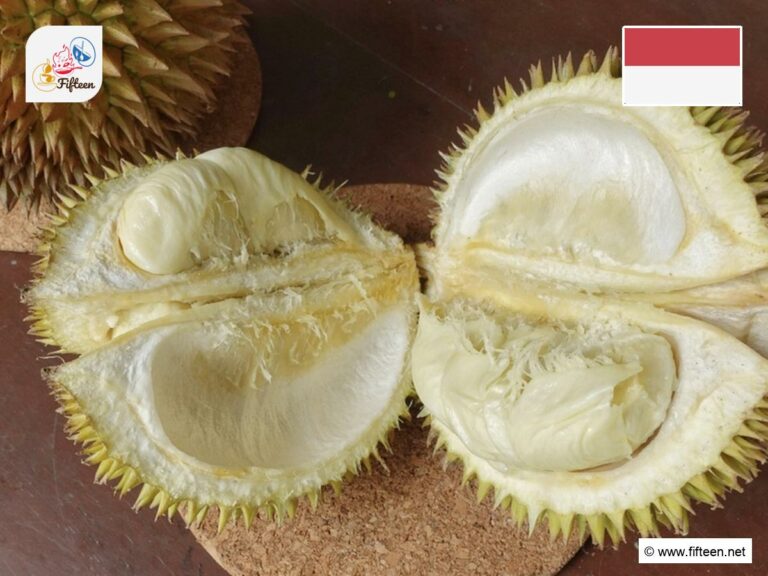
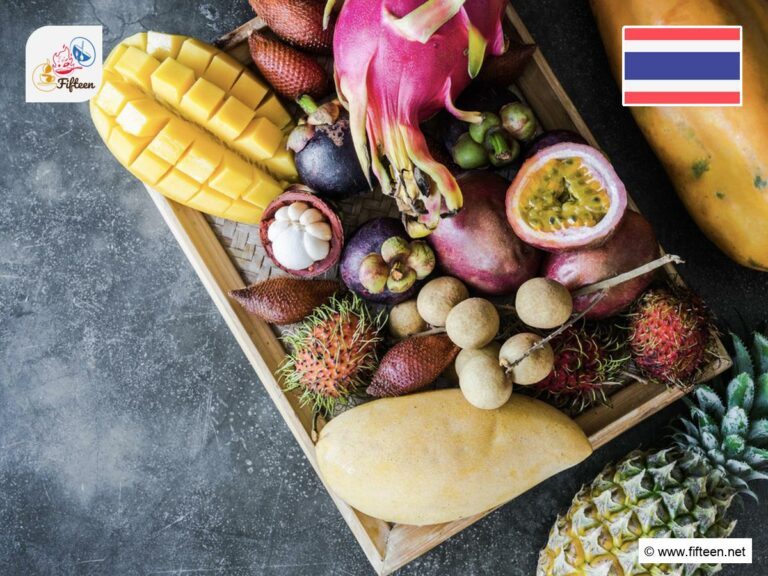
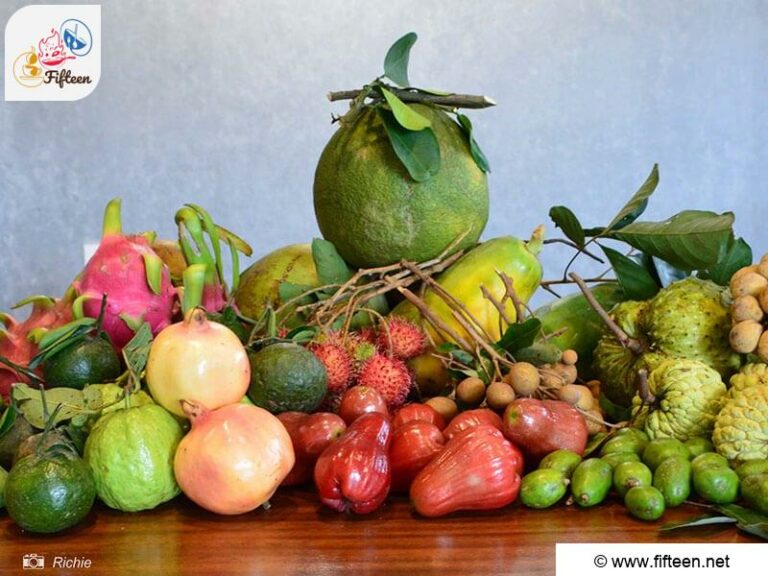
Jamie Scott
Editor in Chief, Senior Content Writer
Expertise
Home Cooking, Meal Planning, Recipe Development, Baking and Pastry, Food Editor, Cooking-video Maker, Western Food Evaluation Expert
Education
Le Cordon Bleu College of Culinary Arts
Local Community College, New York, NY
Jamie Scott is a skilled culinary expert and content creator specializing in Western cuisine. With over 15 years in the culinary field and formal training from Le Cordon Bleu, Paris, Jamie deeply understands how to blend nutrition with delicious flavors. His passion for cooking matches his commitment to making healthy eating accessible and enjoyable.
On Fifteen.net, Jamie brings a fresh perspective to classic dishes and beverages, offering readers insightful recipes, cooking tips, and a fresh view on meal planning that emphasizes taste, health, and simplicity.